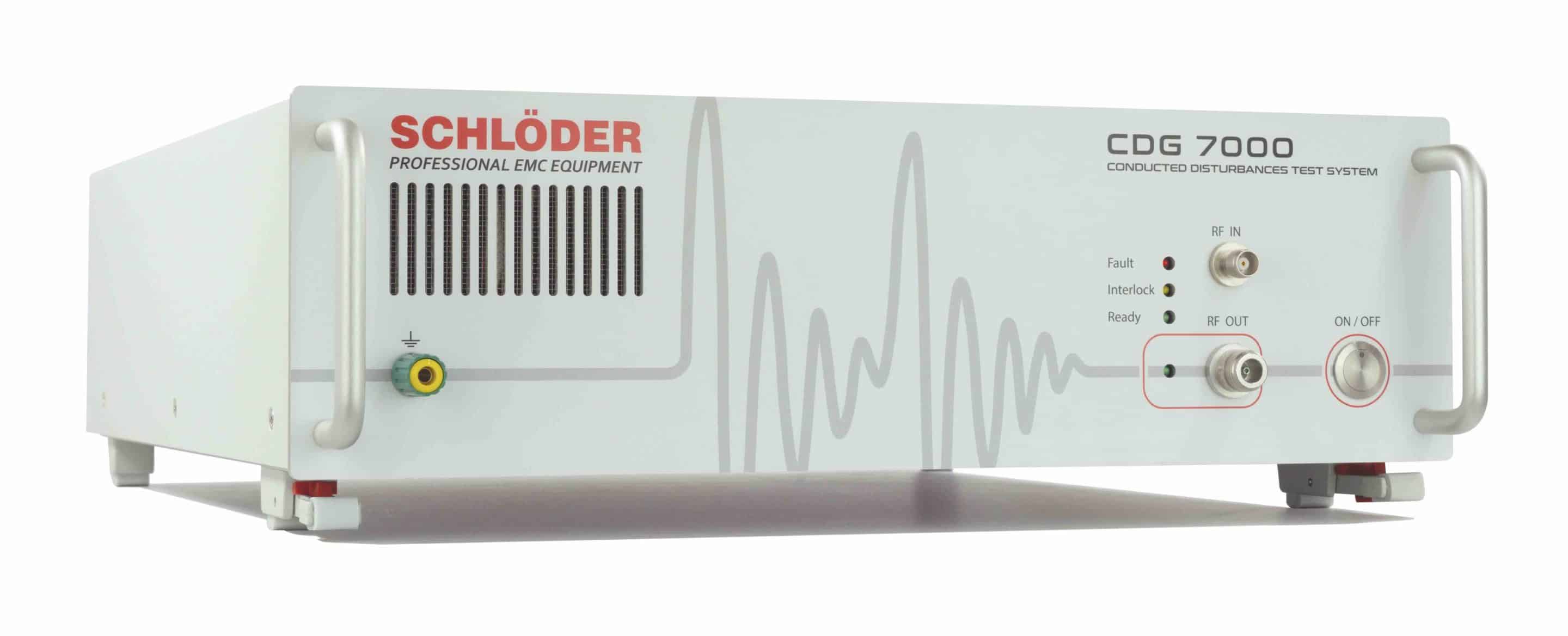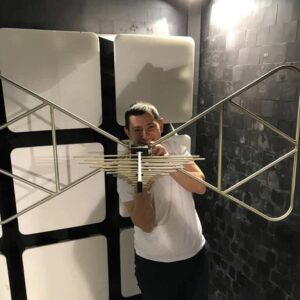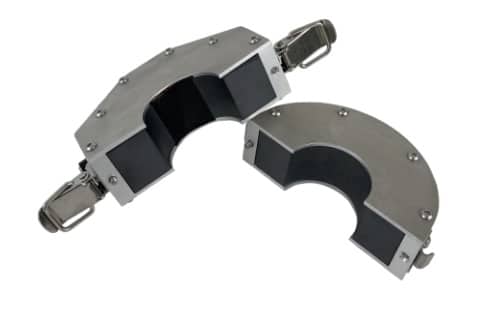About ISO 11452-4
ISO 11452-4 is an EMC standard used for elecronic components used in automotive. It is used to validate immunity requirements of the product under test. The tests are under this standard are named as Conducted Immunity or BCI Immunity. Recent version of the standard is ISO 11452-4:2020 which can be reached on ISO’s website. To reach the full version of the standard you have to purchase it due to copyright issues.
Scope of ISO 11452-4
ISO 11452-4:2020‘s Scope section is given below:
This document specifies harness excitation test methods and procedures for determining the immunity of electronic components of passenger cars and commercial vehicles regardless of the propulsion system (e.g. spark-ignition engine, diesel engine, electric motor).
The bulk current injection (BCI) test method is based on current injection into the wiring harness using a current probe as a transformer where the harness forms the secondary winding.
The tubular wave coupler (TWC) test method is based on a wave coupling into the wiring harness using the directional coupler principle. The TWC test method was developed for immunity testing of automotive components with respect to radiated disturbances in the GHz ranges (GSM bands, UMTS, ISM 2,4 GHz). It is best suited to small (with respect to wavelength) and shielded device under test (DUT), since in these cases the dominating coupling mechanism is via the harness.
The electromagnetic disturbances considered in this document are limited to continuous narrowband electromagnetic fields.
Test methods
Two test methods are defined under the standard:
1. BCI test method (1 MHz to 400 MHz)
BCI is a method of carrying out immunity tests by inducing disturbance signals directly into the wiring harness by means of a current injection probe. The injection probe is a current transformer through which the wiring harnesses of the device under test (DUT) are passed. Immunity tests are carried out by varying the test severity level and frequency of the induced disturbance.
2. TWC test method (400 MHz to 3 GHz)
The approach of this test method is an equivalent coupling to a plane wave coupling into a wiring harness of automotive components. To realize this, a short 50 Ω coaxial line configuration with open ends, an inner tube- shaped conductor and matched terminations are used to generate a transverse electromagnetic (TEM) wave inside. The wiring harness leads through the inner conductor of the wave coupler. This leads to two disturbing components for the DUT: a TEM wave component coupled via the cable, and a radiated component, caused by the scattering field from the primary TEM wave in the connecting cable between the coupler and the DUT.
Test location
The tests shall be performed in a shielded enclosure.
Test Instrumentation
The tests shall be performed in a shielded enclosure.
1. Equipments for BCI test method
Ground Plane
Current Injection Probe(s)
Current measurement probe(s)
Artificial Network(s) [AN(s)]
Radio frequency (RF) generator with internal or external modulation capability
Power amplifier
Power measuring instrumentation to measure the forward and reverse power
Current measurement equipment
2. Equipments for TWC test method
Ground Plane
Tubular Wave Coupler;
Artificial networks(s) [AN(s)]
RF generator with internal or external modulation capability
Power amplifier
Power measuring instrumentation to measure the forward and reverse power
Test methods
Prior to performing the tests, a test plan shall be generated which shall include the following:
1. Test set-up
2. Test method
3. Frequency range
4. DUT mode of operation
5. DUT acceptance criteria
6. Test severity levels
7. DUT monitoring conditions
8. Probe location
9. Injection conditions for wiring with multiple connectors and/or multiple branches
10. Test report content
11. Load simulator
12. Any special instructions and changes from the standard test
Does UN ECE Regulation 10 require tests according to ISO 11452-4?
Yes, according to UN ECE R10 regulation, RF immunity tests shall be performed within this range: 20MHz to 2GHz. The regulation is expected to be updated and this frequency range requirement would be 20MHz to 6GHz. For test laboratories and manufacturers, 20-400MHz portion of the frequency range can easily be tested according to ISO 11452-4. ECE R10 allows and requires this. BCI test method is one of the test methods mentioned under ECE R10. Alternative test method is ALSE method which requires anechoic chamber, RF generator, amplifier and antennas to perform immunity tests in this range: 20-400MHz.
What we offer?
Any equipment related to ISO 11452-4 including:
* Shielded Enclosure
* Ground Plane
* Current Injection Probes
* Current measurement probes
* Artificial Networks
* RF Generators with internal or external modulation capability
* Power Amplifiers
* Power measuring instrumentation to measure the forward and reverse power (shortly power meters)
* Current measurement equipments
* Turn-key test equipment supply and laboratory installation services
Training related to ISO 11452-4 tests and requirements:
* Online training
* Onsite training (at customer’s facility or laboratory)
* Laboratory training (at one of our agreed laboratory)
Testing Services according to ISO 11452-4
* Pre-compliance testing services
* Full-compliance or Accredited testing services
Calibration Services of equipments used for ISO 11452-4
* Accredited Calibration services including certificates
Validation Services of test rooms used for ISO 11452-4
* On site validation measurements of the test chambers or shielded enclosures
* Accredited or pre-compliance measurements including validation report/certificate
BCI Immunity Test System (ISO 11452-4 Test Level 4 compliant)
We are offering below BCI immunity test system for testing electronic components according to ISO 11452:2020. To ask a quote or order, please send us an email.
| Model name | Description |
| CDG 7000-75 |
Conducted RF Generator acc. IEC 61000-4-6, Ed.4.0, 100 kHz – 400 MHz, amplifier 75W, Maximum test level: 30 V (40 V) with 80% AM (without 6 dB), Built-in directional coupler with Software HELIA 7 – Basic, USB, LAN |
| HELIA 7 – BCI | Software extension necessary for BCI ISO/MIL tests, requires HELIA 7 – Basic |
| CDG 7020-20W | 20 dB Attenuator, 20 W, N-f/ N-f |
| CDN BCI-P1_MT-1 |
Clamp for Bulk-Current Injection test (BCI) foldable incl. Matching Transformer, 4 kHz – 400 MHz, for cables up to Ø 40mm, incl. calibration jig., according to norm IEC 61000-4-6, ISO 11452-4, MIL STD-461 (CS114) |
| CDG CMP-45 |
Current Monitoring Probe 10kHz – 400 MHz, foldable, for cables up to 45 mm diameter, insertion impedance < 2,5 Ω |
| CDG A CMP-45 | Calibration Set for CDG CMP-45 current monitoring probe |
Made/Manufactured in: Germany
Delivery time: Approximatel 16 weeks
Pricing: Approximately 37k EUR (with delivery terms EXW). Pricing migth be updated during the quotation and ordering. Pricing mentioned here is only for informational. Ask a quote for exact and recent pricing.
Shipment: International shipment is available. We can ship to any country which is not restricted. We are able to ship from Hungary, Germany, Ireland and Turkiye. We can ship with our shipping account or you can arrange a collect.

Bulk Current Injection Probe (4 kHz – 400 MHz)
Do you need any EMC product or service for testing vehicles or electronic components?

We are offering broad range of services and products for Electromagnetic Compatibility (EMC) for automotive and other industries. Send us your requirements and ask a quotation.

Recent Comments